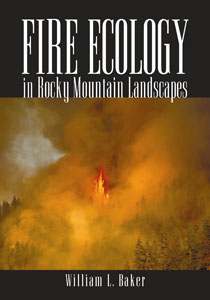"This is a landmark book in disturbance ecology and a masterful synthesis reflecting William Baker's deep knowledge of fire dynamics and understanding of the historical and spatial context of fire-controlled landscapes in the Rocky Mountains. No mere compendium, this book spares few paradigms for the author's insightful scrutiny backed by rigorous data. The book will exceed the expectations of ecologists, geographers, conservationists, and managers."
David J. Mladenoff, Beers-Bascom Professor in Conservation
"Fire Ecology in Rocky Mountain Landscapes examines fire's role in different settings and the influence of humans and climate in shaping fire regimes, past and present. Baker offers a cautionary tale about failed management approaches, the likelihood of severe fires in the future and the urgent need to recast our relationship with nature. Finally, it is a comprehensive reference for fire scientists and fire management working in the interior West."
Cathy Whitlock, Professor of Earth Sciences, Montana State University
"Baker makes a compelling argument that extensive, high-severity fires are a natural component of Rocky Mountain ecosystems; and he questions the widespread view that our 'fire problem' and 'forest health problems' are a consequence of twentieth-century fire suppression. This book dismisses sold strategies stressing costly fuels reduction and fire suppression, and instead suggests sustainable strategies that treat wildfire as a problem in land-use decision making."
Thomas Veblen, Professor, Department of Geography, University of Colorado
"Baker presents a refreshing perspective on fire ecology, revealing multidimensional factors at work in Rocky Mountain ecosystems. His willingness to question established paradigms breaks new ground and will add immensely to our understanding of fire in the systems, ensuring that this will be standard reference for years to come."
Jon Keeley, Research ecologist, US Geological Survey and adjunct professor
"Although the book has a regional focus, the concepts and issues that it presents are widely applicable, making it an excellent resource for researchers, fire and natural resource managers, land planners and policy makers working in diverse fire-prone regions."
Austral Ecology

